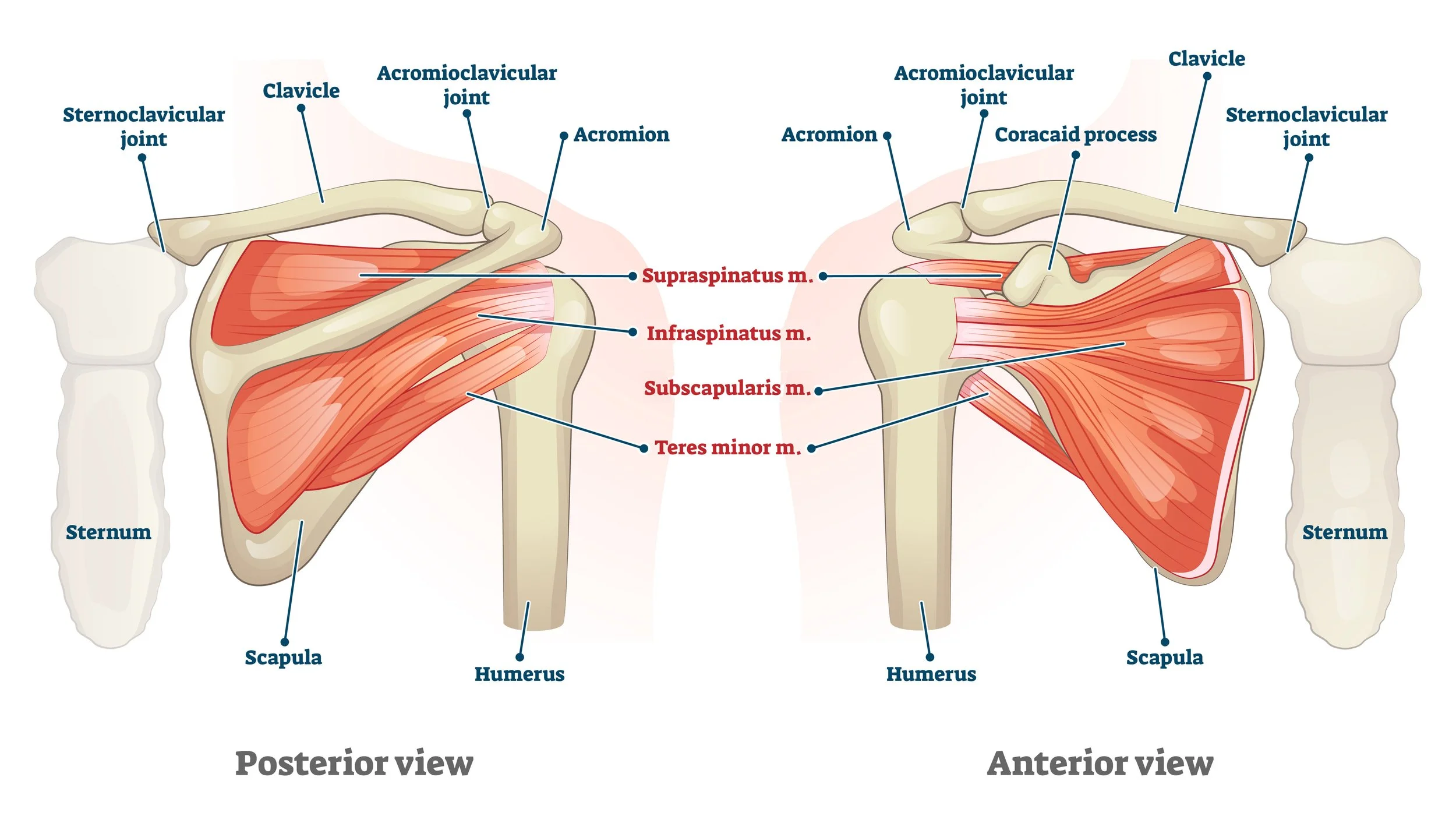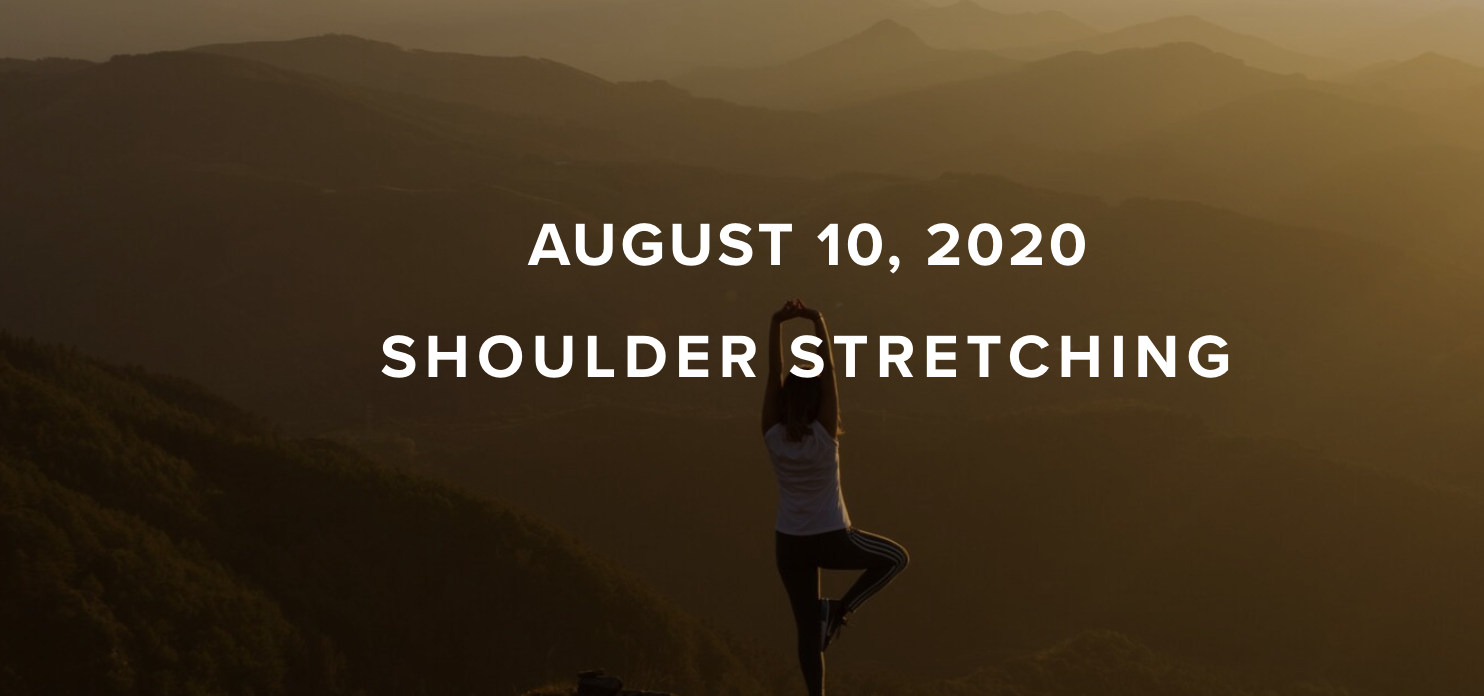What Does the rotator Cuff Do?
What Does the rotator cuff Do?
During arm movements, the rotator cuff contracts and prevents the sliding of the head of the humerus, allowing full range of motion, and providing overall joint stability. The rotator cuff also helps in the mobility of the shoulder joint by facilitating abduction (lifting arm to the side), medial or internal rotation (toward the belly), and lateral or external rotation (to the outside).
The rotator cuff in it’s most fundamental framework is for lifting the arm and rotating it towards the body and away from the body. If you are suffering from a possible tendinitis or tear then on the more extreme range it is felt in many or all daily activities.
Moderate or Severe Tears May feel symptoms when:
Walking
Sleeping
Lifting Groceries
Closing your Car door
Tucking in your shirt
Putting on a bra
Typing
Driving
Getting up from a chair
Small Tears may feel symptoms in the following:
Throwing a baseball
Serving a tennis ball
Overhead work for long periods in the house
Vacuuming
Swimming
Weights: Burpees / Push-Ups / Med Ball Throws / Bench Press / Flys / Curls / Side Arm Raises
CrossFit Overhead Movements
Slowly lowering a weight
Yoga: Downward Dog / Child’s Pose / Chaturanga /
There are many more dynamic movements the the cuff does for work requirements including but not limited to overhead reaching, painting, mechanical work, carrying heavy items, supporting body weight, opening / closing doors, driving, and even pushing a mouse. A modification if possible by your therapist to improve the ergonomics of your work environment and or home office is critical.
More Shoulder Articles & FAQs
What Exercises Are Bad for the Rotator Cuff?
How Can I tell If I Have a Strain or Torn Rotator Cuff?
What Are the Tests for a Rotator Cuff Tear?
Do I need an MRI or MRI Arthrogram for my Shoulder?
What is Wrong With My Shoulder?
What is Rotator Cuff Tendinitis?
Related Webinars
Related Blog Articles
Contributing Authors, Collaborators, & Colleagues:
Heidi Biehl, PT, DPT, OCS, CSCS, CFSC
Matt Sato, PT, TPIc, SFMA
Benjamin Wobker, PT, MSPT, CSCS, SFMA
Joe nance, PT, MPT, OCS, COMT, FAAOMPT, ATC
DR. Samuel Koo, MD
DR. Jamie Antoine, MD
Dr. Vincent Santoro, MD
Dr. Camile Clinton, MD
Dr. Bob AdamS, DO
Dr. Christian Peterson, DO
DR. Chris Wahl, MD
Dr. Dayne Mickelson, MD
DR. Tyler Nathe, MD
Dr. Thomas CastLe,MD
Dr. Michael Sailer, MD
Dr. Greg Komenda, MD
References:
Orthopedic Physical Assessment, 4th Edition. David J. Magee, 2006. www.emedicine.medscape.com/article/93095-overview
Kim TK, et al. "Clinical features of the different types of SLAP lesions" Journal of Bone Joint Surgery Am. 2003 Jan;85-A(1):66-71. http://emedicine.medscape.com/article/1261463-overview
Mayo Clinic: Rotator Cuff; https://www.mayoclinic.org/diseases-conditions/rotator-cuff-injury/symptoms-causes/syc-20350225
WebMD: Rotator Cuff; https://www.webmd.com/pain-management/qa/what-causes-rotator-cuff-problems
Disclaimer:
This website is an information and education resource for health professionals and individuals with injuries. It is not intended to be a service for patients and should not be regarded as a source of medical or diagnostic determination, or used as a substitute for professional medical instruction or advice. Not all conditions and treatment modalities are described on this website. Any liability (in negligence or otherwise) arising from any third party acting, or refraining from acting, on any information contained on this website is hereby excluded.





